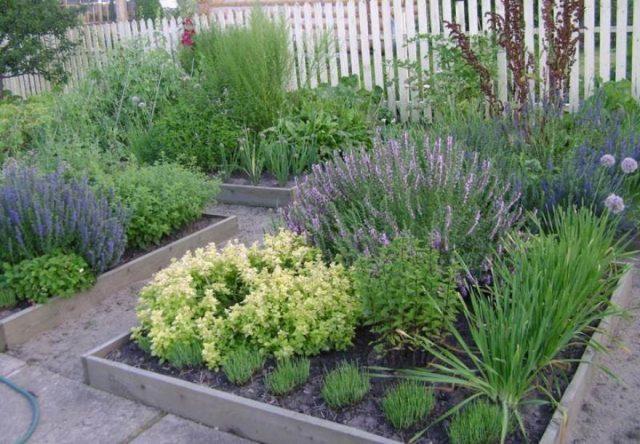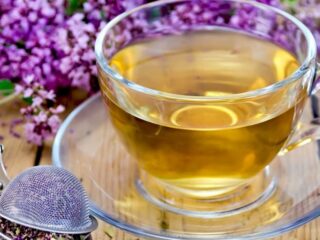Content
Many home gardeners are passionate about growing aromatic crops. Some of the most popular herbs include lemon balm and catnip. Both plants are used in folk medicine and cooking, are among the sought-after elements of landscape design, and also have a certain external similarity. What is the difference between catnip and lemon balm from the point of view of biologists and from the perspective of their practical application, hortologists will reveal.

Melissa and catnip are popular ornamental and medicinal crops among gardeners.
Is it the same thing or not?
Catnip (Latin name Nepeta cataria) is a perennial plant. The second name for the herb is catnip, as furry pets show a noticeable interest in it.
Melissa officinalis (Latin name Mellissa officinalis - lemon balm) is also a perennial herbaceous plant, popularly called lemon balm. Both catnip and lemon balm, like all other types of mint, belong to the Lamiaceae family.
The external similarity of plants is manifested in the following characteristics:
- the height of the stems is approximately the same;
- opposite arrangement of leaves;
- well developed rhizomes;
- flowers are collected in a whorl;
- have a similar lemon aroma.
In addition, the time of active flowering of both herbaceous perennials coincides. This period lasts from the beginning of summer until almost the end of the season.
How to distinguish lemon balm from catnip
Although lemon catnip and lemon balm are similar in appearance, there are significant differences between them. Each plant from the Yamnotaceae family has pronounced botanical and morphological characteristics. With the help of photos it is easy to highlight the similarities and differences between lemon balm and catnip.
By appearance
Catnip has smaller, heart-shaped leaves, their color is darker, and there is a noticeable gray tint. The serrations along the edges of the ovoid leaf blades of lemon balm are smaller and appear wrinkled due to pronounced veins. The surface of catnip leaves is soft to the touch, as if they were made of felt. The smallest hairs form dense pubescence, while in lemon balm individual large villi are noticeable. In catnip, lavender-colored inflorescences resemble a spike, unlike lemon balm, which has pale lilac, almost whitish flowers arranged in tiers.

In Nepeta cataria the inflorescence is a panicle at the top of the shoot, in Mellissa the flowers are axillary in the form of semirings
By smell
The aroma exuded by both essential plants is reminiscent of citrus fruits. In lemon balm it is more delicate and volatile, while in catnip it is distinctly spicy and persistent, since the plant tissue contains many fragrant components - citral and geraniol.
Taste
Both herbaceous crops are popular in cooking and perfumery.Lemon-smelling plants are added to tea, sweet drinks, fruit dishes, and confectionery. Melissa and catnip extracts are common components in body and hair care products (shampoos, gels, creams, etc.) Due to their pronounced citrus flavor and aroma, lemon balm and catnip are interchangeable when used.
By composition and properties
The biochemical composition of herbs popular among gardeners is similar. Catnip and lemon balm contain essential oils, vitamins A, B, C and a complex of minerals:
- potassium;
- magnesium;
- calcium;
- sodium;
- phosphorus;
- iron.
Melissa also contains zinc and copper. Due to their rich biochemical composition, fragrant herbs are successfully used in the structure of garden plots and plantings in the apiary zone.
By area of application
Lemon balm is widely used in both folk and official medicine. The range of uses is as follows:
- as a hypnotic, anticonvulsant, antiemetic;
- as a pain reliever for migraines, painful menstruation;
- due to the content of potassium and magnesium, as an aid for cardiac disorders.
Catnip, which has a sedative and pain-reducing effect, has a similar effect on the human body. Except for one thing: unlike lemon balm, which lowers blood pressure and slows down the heart rate, catnip has the opposite effect, and therefore is contraindicated for hypertensive patients.
The differences between the two spice cultures are presented in more detail in the video:
By region of growth
Mellissa officinalis occurs wild in southern Europe, the Caucasus and Central Asia. Cultivation of lemon balm is possible almost throughout the entire territory of Russia.
When breeding, it is important to take into account the fact that lemon balm is sensitive to cold and is prone to freezing in severe winters. For this reason, the plant must be planted in areas sheltered from the winds and well lit by the sun.
Nepeta cataria grows everywhere. It is found on forest edges, low mountain slopes, along roadsides and even in urban wastelands. Catnip exhibits frost resistance and loves light and moisture.

Catnip tolerates wintering well in temperate climates
What is better to choose
Amateur gardeners, when organizing the space of a small area, often face a dilemma: which herbs to choose for planting. Catnip and lemon balm, despite a number of differences, are perceived by many as identical plants. Both crops are unpretentious, overwinter without shelter, and grow quickly.
All types of mint form pleasant combinations with any floral aromas and fit harmoniously into mixborders. Plantings with fragrant herbs are recommended to be located along the edges of garden paths, along the terrace of a personal house, next to an open gazebo, not far from the barbecue area.
Currently, many landscape designers, gardening specialists and even non-professional gardeners are creating areas sown exclusively with aromatic herbs. In the conditions of central Russia, when forming areas with fragrant crops, in addition to catnip, lemon balm and mint, the following can be used:
- oregano;
- lovage;
- thyme;
- fennel;
- hyssop;
- lavender;
- tarragon and other spicy plants.
Flowerpots with planted aromatic herbs allow you to create an area that exudes pleasant odors, even on a paved area. In the apartment, a balcony and wide window sills are suitable for creating a fragrant zone.

Plantings of catnip and lemon balm serve to repel insect pests from the local area
Interchangeability
For medicinal purposes, herbal decoctions can be used to regulate the functioning of the gastrointestinal tract and as an anti-inflammatory, analgesic or sedative. In cooking, both herbaceous crops are also used in the same way, but the aroma of lemon balm is more subtle, “noble”, the smell of catnip is stronger and coarser. Both types of herbs are used in landscape design, forming successful combinations with other garden plants.
Conclusion
The difference between catnip and lemon balm is noticeable even to amateur gardeners. But, despite the similarities and differences, each of the plants has its own advantages when used in cooking and for medicinal purposes, and is also considered a useful decoration for a personal plot.








